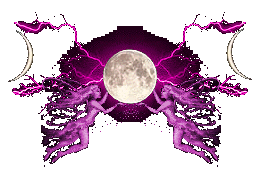Principles of Wiccan Belief

Wiccan Principles and Beliefs
by Raven Grimassi From: Wiccan Mysteries
Wicca, as a religion first came to public attention with the publication of Gerald Gardner's book "Witchcraft Today" in 1954. This was followed by his book "The Meaning of Witchcraft" in 1959. At that time Wicca was viewed as an ancient European fertilty cult that had survived in the form of an underground cult, persecuted bu the Christian church in the Middle Ages.,
With the advent of such authors as Scott Cunningham, Wicca took on elements of New Age philosophy. The decade of the 1980's saw many changes and adaptations within the Wiccan religion. Self-initiation began to replace initiation at the hands of experienced practitioners. Tenets of belief were deleted or modified to suit ones personal needs, tastes. and politics. Wicca became two almost separate religions, split in two, Elder Wicca and Neo-Wicca.
There is an old story that the original Tarot decks contained two fool cards seemingly identical in appearance-one at the beginning of the Major Arcana and the other at the end. Upon closer inspection however, the second fool depicted a latched traveler's bag slung over the character's shoulder. The bag itself appeared to be full, whereas the bag on the first card was empty and unlatched. Both cards represent the spiritual seeker or traveler. As the story is told, the second card's bag was filled with experiences of all the Major Arcana cards preceding it. The mess age of the two fool cards is that there are two paths an individual may follwo. He or she may strike out alone and encounter the experiences that await without any point of reference from which to deal with them (acting upon intuition), as in the symbolism of the first card. The second approach is to journey forth on one's Quest carrying the knowledge gathered from the experiences of others, drawing on them for reference as needed. Both types of characters appear to be the same at fisrt encounter, but the difference is made clear by what they carry along with them.We will now examine these two approaches to Wiccan spirituality,both of which have true value in their own right.
Elder Wiccans believe in following the teachings of those who have gone before them, as well as incorperating their own understanding into a spiritual map. Elder Wiccans adher to the old ways and reamin receptive to those who speak with seeming authority, listening and learning from any who teach from expience. There will always be time for careful discernment after the words have been well considered.
Neo-Wiccans tend to reject dogma and structure withint the religion and have a general distrust of anyone claiming to be an authority. they believe in following their own intuition and their own personal code of ethics and morality. Neo-Wiccans look within, perceiving themselves to be both student and teacher at the same time. Elder Wiccans look to nature as the spiritual blueprint, and see within Her the existence of definite rules, laws,and ways that serve as teachers. This is probably the main difference between the old ways and the new ways; Elder Wiccans consider the established Ways to be the keys to understanding, Neo-Wiccans consider the established Ways to be restrictive barriers to the developement of their own spirituality.
The focus on the self (as in New Age philosophy) was not a view originally held within Traditional Wicca. Wiccan beliefs and practices arose from a sense of community within the early clans. Myths and ledgends were created in order to preserve the knowledge of Wiccan Spirituality fot the benefit of those who were to follow. To "go it alone" was not originally a Traditional Wiccan value. To follow the well worn path to its end, and then procede to find one's way, was a Traditional Wiccan value. Neo-Wicca began as seekers from other religions come to the Old Religion in search of a spiritual path more siuted to their individual needs. This was largely due to the New Age philosophy influencing Wicca, which basically promoted 'do your own thign, no pre-set rules. do whatever feels right". As the base of solitaries grew, their onlt source of information came from whatever books were available to them. They accepted those teachings with which they were in agreement , amd tossed out those that they found to be uncomfortable. some eventually formed groups (covens) and went on to gain personal experience through their involvement in ritual work and Goddess worship. Out of this arose many eclectic Wiccan traditions.
Wicca,as gerald Gardner taught it, was a Nature religion with a focus on a fertility goddess and god. In this pantheon there were also varios nature spirits such as Elementals, along with the company of entities called The Watchers. Theseentities guarded the ritual portals known as Watchtowers which stood at the cardinal points of a ritual circle. The Goddess was also called the Great Goddess and was considered to be the Mother of All Gods. The Goddess was also associated with the moon, and thus she was sometimes called the Queen of Heaven. She reigned with a male consort called the Horned One, who was a nature God and was also associated with the sun. In this association he bore the aspect of a Father God or Lord of the heavens.
Traditional Wiccan beliefs include the teaching of reincarnation, through which a soul experiences many lifetimes, evolving as a spiritual being. Each life experience contains lessons that prepare the soul for a future existence in a higher non-physical dimension. In Wiccan theology this realm is often referred to as the Summerland. In this spiritual realm (associated with the moon) the Wiccan experiences the pleasure of rest and renewal in a Pagan Paradise.